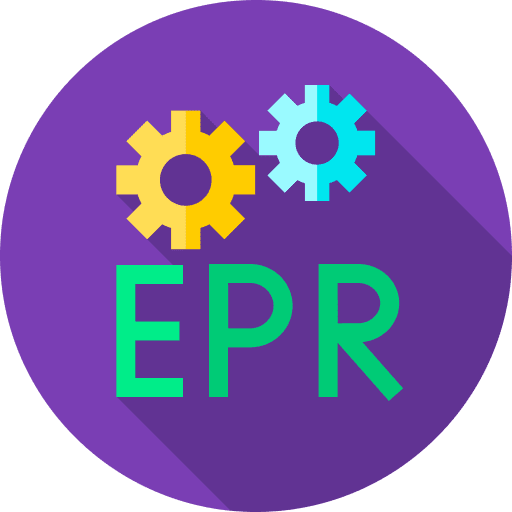Recycling automobile parts is crucial for environmental sustainability and resource conservation. However, navigating the process of Extended Producer Responsibility (EPR) fulfillment and annual filing can be complex and overwhelming. In this guide, we will provide you with a comprehensive, step-by-step approach to efficiently manage your automobile parts recycling responsibilities. From understanding EPR regulations to filing annual reports, we will equip you with the knowledge and tools needed to ensure compliance and contribute to a greener future.
Key Takeaways:
- Establishing a robust EPR program: Implementing Extended Producer Responsibility (EPR) for automobile parts recycling requires a well-planned program that covers collection, segregation, and recycling processes.
- Annual filing requirements: It is crucial to understand the regulatory requirements for annual filing related to EPR fulfillment for automobile parts recycling. This includes reporting on the collection, treatment, and recycling of materials within the specified timeframe.
- Ensuring compliance and transparency: Adhering to EPR regulations, maintaining accurate records, and submitting timely reports are critical aspects of automobile parts recycling. Transparency in operations helps build trust with stakeholders and regulatory bodies.
Understanding Automobile Parts Recycling
Now, let's examine into the world of automobile parts recycling. This process plays a crucial role in sustainability efforts, helping to reduce waste and conserve resources. By properly recycling automobile parts, we can minimize environmental impact and support a circular economy.
Types of Recyclable Automobile Parts
With a wide range of recyclable automobile parts available, it's important to understand what can be recycled. Some common examples include engines, transmissions, batteries, tires, and catalytic converters. Recognizing the recyclable components in a vehicle is the first step towards effective recycling.
| Engines | Transmissions |
| Batteries | Tires |
| Catalytic Converters |
Factors Influencing the Recycling Process
For an efficient recycling process, several factors come into play. These include the availability of recycling facilities, technological advancements in recycling methods, market demand for recycled materials, regulatory requirements, and consumer awareness. The recycling industry is constantly evolving to adapt to these influencing factors.
- Availability of recycling facilities
- Technological advancements in recycling methods
- Market demand for recycled materials
- Regulatory requirements
- Consumer awareness
Recognizing the significance of these factors can help streamline the recycling process and ensure the effective reuse of automobile parts. The commitment to sustainable practices and responsible recycling is necessary in preserving the environment for future generations. The success of the recycling process hinges on addressing these influencing factors.
Step-by-Step Guide to EPR Fulfillment
Step 1: Internal Assessment and Planning
The initial step in the EPR fulfillment process is to conduct an internal assessment of your automobile parts recycling operations. This involves evaluating the current processes, identifying recyclable parts, and planning for efficient collection and sorting methods.
Step 2: Collection and Sorting of Recyclable Parts
To ensure successful EPR fulfillment, the collection and sorting of recyclable parts are crucial. Implement a systematic approach to gather used parts from various sources, sort them according to material type, and prepare them for processing.
Assessment
Effective collection and sorting are vital for maximizing the recycling potential of automobile parts. By assessing the types of parts being collected and implementing proper sorting techniques, you can streamline the processing and transformation stages.
Step 3: Processing and Transformation
To complete the EPR fulfillment cycle, the processed recyclable parts must undergo transformation into reusable materials. This step involves using specialized techniques to convert the parts into raw materials that can be used in manufacturing new products.
Step 4: Compliance Reporting and EPR Certification
Fulfillment
Once the processing and transformation stages are completed, compliance reporting and EPR certification must be obtained to demonstrate adherence to regulations. Keep detailed records of recycling activities and report them accurately to achieve EPR certification and maintain compliance with recycling regulations.
Annual Filing for Automotive Parts Recycling
Despite the complex nature of Extended Producer Responsibility (EPR) compliance, annual filing for automotive parts recycling plays a crucial role in ensuring the proper management of end-of-life products. It is crucial for all stakeholders to adhere to the guidelines set forth by the regulatory bodies. For a comprehensive understanding of the process, refer to the Guidance Manual for Centralized EPR Portal for Plastic Recycling.
The Importance of Documentation and Record-Keeping
Record-keeping is a fundamental aspect of annual filing for automotive parts recycling. Maintaining detailed documentation of all activities, transactions, and compliance measures is crucial for demonstrating transparency and accountability. Proper record-keeping helps in verifying the accuracy of data submitted during annual filings and ensures that all regulatory requirements are met.
Additionally, having organized records enables stakeholders to track progress, identify areas for improvement, and address any discrepancies in a timely manner. The documentation also serves as evidence of compliance in case of audits or inquiries by regulatory authorities.
Tips for Accurate and Timely Annual Filing
To ensure accurate and timely annual filing for automotive parts recycling, stakeholders must follow these key tips:
- Plan Ahead: Begin the preparation process well in advance of the filing deadline to avoid last-minute errors or delays.
- Double-Check Data: Review all information thoroughly to ensure accuracy and completeness before submission.
- Engage with Experts: Seek guidance from industry professionals or consultants to navigate complex regulatory requirements.
Knowing the specific requirements and deadlines for annual filing is crucial for compliance with EPR regulations. Stakeholders must stay informed about any updates or changes in the filing process to avoid penalties or non-compliance issues.

Pros and Cons of Automobile Parts Recycling
Not only does automobile parts recycling contribute to environmental sustainability by reducing waste and conserving resources, but it also plays a significant role in the circular economy. However, there are also challenges and drawbacks associated with this process that need to be carefully considered.
| Pros | Cons |
| Reduces waste | Requires specialized recycling facilities |
| Conserves resources | Costly initial setup |
| Promotes circular economy | Logistical challenges in collecting and sorting parts |
| Creates employment opportunities | Issues with product quality and safety |
| Increases revenue through recycled materials | Regulatory compliance complexities |
Advantages of Embracing EPR Models
Models Republic of Korea illustrate how Extended Producer Responsibility (EPR) can revolutionize automobile parts recycling. By placing the responsibility on manufacturers to manage the end-of-life products, EPR models encourage innovation in recycling technologies and enhance the efficiency of resource utilization. Additionally, EPR fosters collaboration among stakeholders, including producers, consumers, and recycling facilities, to create a more sustainable ecosystem.
Models embracing EPR also lead to improved waste management practices, reduced environmental impact, and increased transparency in the supply chain. By implementing EPR, countries can establish a structured framework that aligns economic incentives with environmental goals, driving a shift towards a more sustainable and responsible approach to handling end-of-life products.
Potential Challenges and How to Mitigate Them
Models implementing EPR may face challenges such as resistance from manufacturers, insufficient infrastructure for recycling, and regulatory ambiguities. To mitigate these challenges, stakeholders need to engage in proactive communication and collaboration to address concerns, invest in infrastructure development, and work closely with regulatory bodies to ensure compliance with EPR regulations.
Automobile parts recycling poses unique challenges that require innovative solutions and continuous improvement efforts. By addressing potential challenges head-on and implementing effective mitigation strategies, stakeholders can overcome obstacles and realize the full potential of EPR models in advancing sustainable automobile parts recycling practices.
Final Words
Conclusively, implementing an Extended Producer Responsibility (EPR) program for automobile parts recycling involves a step-by-step approach to ensure compliance with regulations and efficient management of end-of-life vehicle components. By following the guidelines outlined in this comprehensive guide, manufacturers and distributors can fulfill their EPR obligations successfully and file their annual reports accurately. Embracing sustainable practices in the automotive industry is crucial in reducing environmental impact and promoting a circular economy. Committing to responsible recycling of automobile parts not only benefits the environment but also enhances the reputation and credibility of businesses in the eyes of consumers and stakeholders. With proper planning and execution, EPR fulfillment can be a rewarding journey towards a greener and more sustainable future.
FAQ
Q: What is Automobile Parts Recycling?
A: Automobile Parts Recycling refers to the process of collecting, dismantling, and reusing components and materials from end-of-life vehicles to minimize waste and environmental impact.
Q: Why is Extended Producer Responsibility (EPR) important in Automobile Parts Recycling?
A: EPR shifts the responsibility of proper disposal and recycling of automobile parts from the end consumer to the manufacturers and importers, ensuring sustainable practices and reducing the burden on landfills.
Q: What are the steps involved in Automobile Parts Recycling under EPR?
A: The steps include collection of end-of-life vehicles, dismantling and sorting of parts, recycling of materials, and proper disposal of hazardous components to comply with environmental regulations.
How can I fulfill EPR requirements for Automobile Parts Recycling?
A: To fulfill EPR requirements, manufacturers and importers must set up collection centers, establish recycling processes, maintain records of recycling activities, and submit annual reports to regulatory authorities.
What is involved in the annual filing process for Automobile Parts Recycling EPR?
A: The annual filing process includes submitting detailed reports on the collection and recycling of automobile parts, documenting compliance with targets and regulations, and undergoing audits to verify data accuracy and environmental impact.




